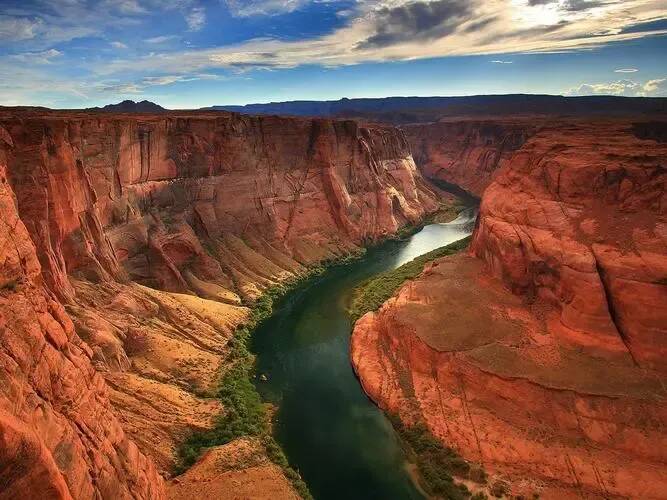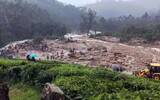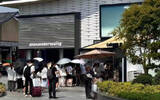Introduction to Kilimanjaro, a coffee producing area in Tanzania, Africa
Africa is located in the western part of the Eastern Hemisphere and is the second largest continent in the world. The topography is dominated by plateaus, which accounts for more than 60% of Africa, so the average elevation of the African continent is 750 meters.

In East Africa, the Ethiopian Plateau, known as the roof of Africa, and the East African Plateau, and the Great Rift Valley runs through the central and western part of the East African Plateau, with many volcanoes on both sides of the rift valley. With many mountains, volcanoes, lakes and rivers, and across the equator, the climate is mainly tropical, making agriculture more developed in East Africa, especially the coffee industry, which accounts for about 14% of the world's total coffee production. Among them, Tanzania is famous for being a "coffee gentleman".
Tanzania is located in eastern Africa, south of the equator, with a terraced terrain high in the northwest and low in the southeast. The western inland plateau accounts for half of the country's total area. The East African Rift Valley runs north-south from the east and west of Lake Malawi. In the northeast is Mount Kilimanjaro, the highest peak in Africa.

Due to its proximity to the equator, the eastern coast and inland lowlands have a savanna climate, while the western inland plateau has a tropical mountain climate, with an annual average temperature of 21 ℃-26 ℃. Although 80 per cent of the region has less than 1000 mm of annual rainfall, Tanzania has many lakes and rivers. Lake Victoria, Tanganyika and Lake Malawi, the three major lakes in Africa, are all on the border with Tanzania and are rich in water resources. High-quality coffee can be produced in Tanzania because of its high-altitude mountains, volcanic soil and rich water resources.
Tanzania is currently divided into nine coffee producing areas, with the relatively well-known ones being Kilimanjaro, Arusha, Ruvuma, Mbeya, Tarime and Kighoma.
Coffee is Tanzania's main economy, and 17% of the country's foreign exchange is generated by coffee, and Kilimanjaro and Arusha are one of the most important coffee producing areas in Tanzania.
These coffee producing areas are all around Mount Kilimanjaro, located in northeastern Tanzania, which is the highest mountain in Africa, with an elevation of 5895 meters. The top of the mountain is covered with perennial snow, which is mainly composed of three extinct volcanoes, Kibo, Mavenz and Sheila. Coffee is grown in areas 1050-2500 meters above sea level. High enough altitude, volcanic soil, and pure snow-melting water are the most suitable areas for growing coffee. On the front street, there is a washed iron pickup from the Kilimanjaro area, which tastes soft and sour, with citrus, berry, honey and nut flavors, soft tea taste and overall balance.
In the Kilimanjaro region, coffee production is mainly in Moshi, the capital of Kilimanjaro, to the south of Mount Kilimanjaro, which has the largest coffee trade and processing center in Tanzania and is mainly responsible for coffee processing and export in the region.
Arusha is the capital city of Arusha province in Tanzania, located in the north of Tanzania and in the west of Mount Kilimanjaro. The area is rich in natural resources, the central crater plateau, surrounded by a number of lakes, and there is a national park in this area. Coffee is grown not only on the slopes of Kilimanjaro, but also on Mount Mount Meru, an active volcano to the north of the city, where there are crater lakes and glacier relics, volcanic soil and rich water sources, so that crops such as coffee and bananas can thrive at an altitude of 1100-1800 meters.
Important Notice :
前街咖啡 FrontStreet Coffee has moved to new addredd:
FrontStreet Coffee Address: 315,Donghua East Road,GuangZhou
Tel:020 38364473
- Prev

Landslide in India's coffee-producing state of Kerala kills 358 people
According to Indian media reports, a large-scale landslide occurred in the Vayanad area of Kerala, India. According to the latest statistics, the landslide accident has caused 358 deaths and serious economic losses. According to reports, this time occurred in the early morning of July 30 in the Vayanad region of Kerala, India, due to continuous heavy rainfall, causing many places.
- Next

Sun warrior! Top 40℃ scorching sun row Muji coffee flash shop?!
▲ Click to pay attention| Daily boutique coffee culture magazine coffee workshop big weekend, 40 degrees high temperature, for most people, this should be a good day to rest in an air-conditioned room. But yesterday in front of the Commercial Plaza on Yenhengcang Street in Suzhou, there was a long line in front of a coffee pop-up store. It made people wonder what it was
Related
- Being chased out of the rain in front of Starbucks?! Store: Sheltering from rain under umbrellas poses a safety hazard
- The white moonlight has changed?! Lucky launches "Big Winter Pear American"
- Hand-brewed coffee three-stage method, high-sweet and universal brewing method to share! What does the high sweet water level of hand-brewed coffee mean?
- What is the difference between raw, refined and full espresso coffee? How to extract espresso and taste good?
- A complete list of coffee bean names and their meanings! What is Yejia Shefi coffee? Where is Mantelin coffee?
- What grade does Arida Manor Kaduai coffee beans belong to? What treatment is Arida ASD slow anaerobic sun exposure?
- The milk tea cup becomes smaller?! Overlord Tea Girl launches a new "Return to Yunnan" series
- Accused of selling counterfeit and high-priced coffee beans! Well-known boutique coffee brand "Oukelao" bowed and apologized!
- How to make espresso dumplings? Can I eat coffee and glutinous rice balls together?
- Save the unformed and stagnant powder cakes in one second! What is the problem with stagnant water in the powder bowl of the espresso machine?

